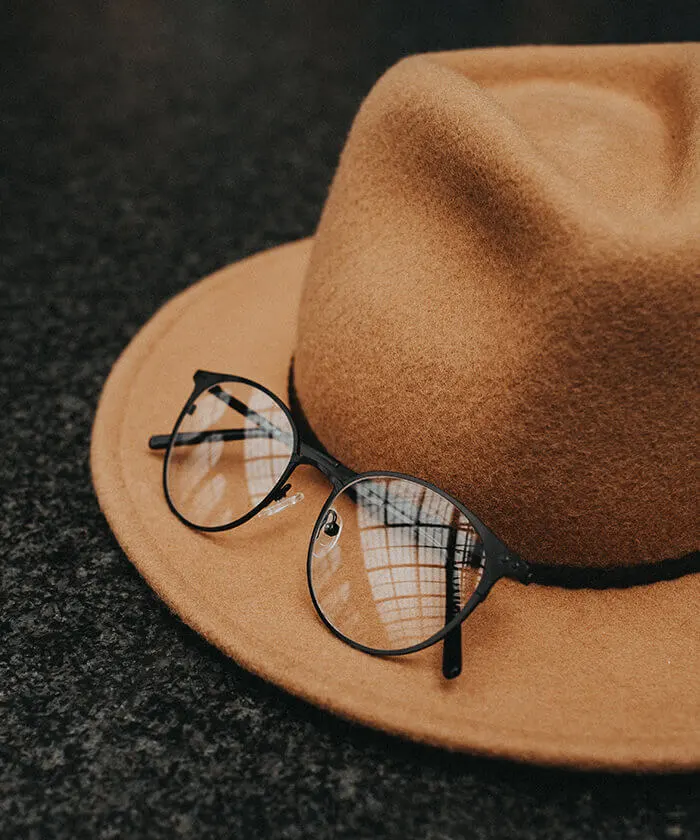Clothing | Fashion Photography
Photo & Design Studio
Photography Studio
Clothing photography is a branch of advertising photography in which fashion, clothing and art are combined. In order to exceed the competitors in this industry Domestic audience attraction via this type of photography is inevitable. Conceptive Design Studio is honored to serve the most sophisticated instruments and a team consists of the art university faculties and relevant course graduates from authentic universities to present befitting services to its customers.
Clothing | Fashion photography is a genre of photography which is devoted to displaying clothing and other fashion items. Fashion photography is most often conducted for advertisements or fashion magazines such as Vogue, Vanity Fair, or Elle. Fashion photography has developed its own aesthetic in which the clothes and fashions are enhanced by the presence of exotic locations or accessories.
Fashion photography has been in existence since the earliest days of photography. In 1856, Adolphe Braun published a book containing 288 photographs of Virginia Oldoini, Countess di Castiglione, a Tuscan noblewoman at the court of Napoleon III. The photos depict her in her official court garb, making her the first fashion model.
In the first decade of the 20th century, advances in halftone printing allowed fashion photographs to be used in magazines. Fashion photography made its first appearance in French and American magazines such as La mode pratique and Harper's Bazaar. In 1909, Condé Nast took over Vogue magazine and also contributed to the beginnings of fashion photography. In 1911, photographer Edward Steichen was "dared" by Lucien Vogel, the publisher of Jardin des Modes and La Gazette du Bon Ton, to promote fashion as a fine art by the use of photography.- Steichen then took photos of gowns designed by couturier Paul Poiret. These photographs were published in the April 1911 issue of the magazine Art et Décoration. According to Jesse Alexander, This is "...now considered to be the first ever modern fashion photography shoot. That is, photographing the garments in such a way as to convey a sense of their physical quality as well as their formal appearance, as opposed to simply illustrating the object."scientific, industrial and artistic; it was born a scientific phenomenon, was expanded as an industry, and manifested itself as an art. Photography was not discovered and accomplished by only one person, but it is the outcome of many people’s efforts in various fields and their discoveries and innovations over the history. In the years leading to the invention of photography, the basis of photography camera had existed, but the first optical lithographic image was produced in 1822 by a French inventor, Joseph Nicephore Niepce, and after that, he could create a permanent image named “view from the window at le Gras”. He had made investigations into silver compounds in collaboration with Louis Daguerre, based on Johann Heinrich’s findings, and Daguerre could invent the daguerreotype process in 1837.
The trichromatic method was first suggested by James Clerk Maxwell. According to his theory, visible light is composed of three primary colors: red, green and blue. Then, he made a film made of three layers each of which was sensitive to one of the primary colors so he could record the first color image in 1861. In 1884 George Eastman invented the roll film, which is a gelatin emulsion coated plastic film, and through the invention of the low-cost box camera, made photography possible for ordinary people and marked a significant revolution in photography. Edwin Land invented a type of analog instant camera, called Polaroid Camera, which created a chemically developed print shortly after taking the picture, and the picture was available after a minute and in newer models after a few seconds.
Vogue was followed by its rival, Harper's Bazaar, and the two companies were leaders in the field of fashion photography throughout the 1920s and 1930s. House photographers such as Steichen, George Hoyningen-Huene, Horst P. Horst and Cecil Beaton transformed the genre into an outstanding art form.
In the mid-1930s as World War II approached, the focus shifted to the United States, where Vogue and Harper's continued their old rivalry. In 1936, Martin Munkacsi made the first photographs of models in sporty poses at the beach. Under the artistic direction of Alexey Brodovitch, Harper's Bazaar quickly introduced this new style into its magazine.
House photographers such as Irving Penn, Martin Munkacsi, Richard Avedon, and Louise Dahl-Wolfe would shape the look of fashion photography for the following decades. Richard Avedon revolutionized fashion photography — and redefined the role of the fashion photographer — in the post-World War II era with his imaginative images of the modern woman. In analog photography, all the measures regarding color, light, and contrast refinement should be taken before the lighting because after lighting and printing the picture, there will not be much to be done about it. Printing in photography means exposing the film or the photography sheet to chemicals which leads to conversion of either the film to negative or positive image, or the paper to image, while digital photography refers to the process of capturing images by means of receiving and recording the light on the surface electronic photosensors. Optical patterns reflected or emitted off the surface of objects affect the photosensitive surface of the sensor leading to the picture being registered. photography was not discovered and completed by one person, but is the outcome of many people’s efforts in various fields and their discoveries and innovations over the course of history. The basis of photography camera had existed years before its invention; Mozi, Aristotle, Euclid, in 4th and 5th centuries AC, had explained the function of the pinhole camera. In ancient Greece it was believed that light is emitted from the eyes to the objects and its reflection is seen by the eye. Aristotle and Euclid, using the pinhole theory, tried to disprove that notion; they placed a semi-opaque sheet behind a pinhole camera in order for the image reflected on it to be seen by the eye. In the sixth century AD, Antimus used a darkroom camera in his experiments.
From 1939 and onward, what had previously been the flourishing and sizable industry of fashion photography all but stopped due to the beginnings of World War II. The United States and Europe quickly diverged from one another. What had previously been a togetherness and inspired working relationship diverged with Paris occupied and London under siege. Paris, the main fashion-power house of the time quickly became isolated from the United States—especially with Vogue Paris shutting down for a brief hiatus in 1940. Sensitized paper was lighted for two minutes and then a latent image was formed which was recorded in small sizes using potassium iodide and sodium sulfate as a negative image. Then, by using that image, he could provide many permanent copies in various sizes. Up until then, photographers had to produce the sensitized plate in the same size as that of the photographed object and there was scaling was not possible. Before 1860 daguerreotype process was deprecated and was replaced by photography based on negative and positive copies. In 1839 John Herschel used sodium teosulfate to invent a process for providing glass negatives which gradually replaced the paper negatives. At last, in 1874, a British company introduced the first dry plate photography glass to the market and photography became practical. But carrying a lot of glasses, considering the weight and fragility, was a problem until 1871 when Richard Maddux shortened the photography time by inventing the gelatin film and made photography easier. This was a turning point in the history of photography.
With these changes, the photography based out of the USA gained a distinct Americana vibe—models often posed with flags, American brand cars, and generally just fulfilling the American ideal. What did remain of the French and British fashion photography on the other hand often had a wartime overlay to the content. Cecil Beaton’s ‘Fashion is Indestructible’ from 1941 displays a well-dressed woman viewing the rubble that once was Middle Temple in London. Similarly, Lee Miller began taking photos of women in Paris and London, modeling the latest designs for gas masks and bicycling with pin curlers in their hair, as they did not have electricity with which to curl their hair. Images such as these remain scarred into the face of fashion photography of the time and display a common sentiment among the fashionable world and the public. Even fashion photographers worked to document the issues surrounding and work towards a documentation of the time—even if within the frame of fashion. These photos are an especially good indication of the fashionable emotions of the time. Many felt that fashion photography, during wartime especially, was frivolous and unnecessary. Yet, the few who worked to preserve the industry did so in new and inventive ways throughout the duration of the war.







